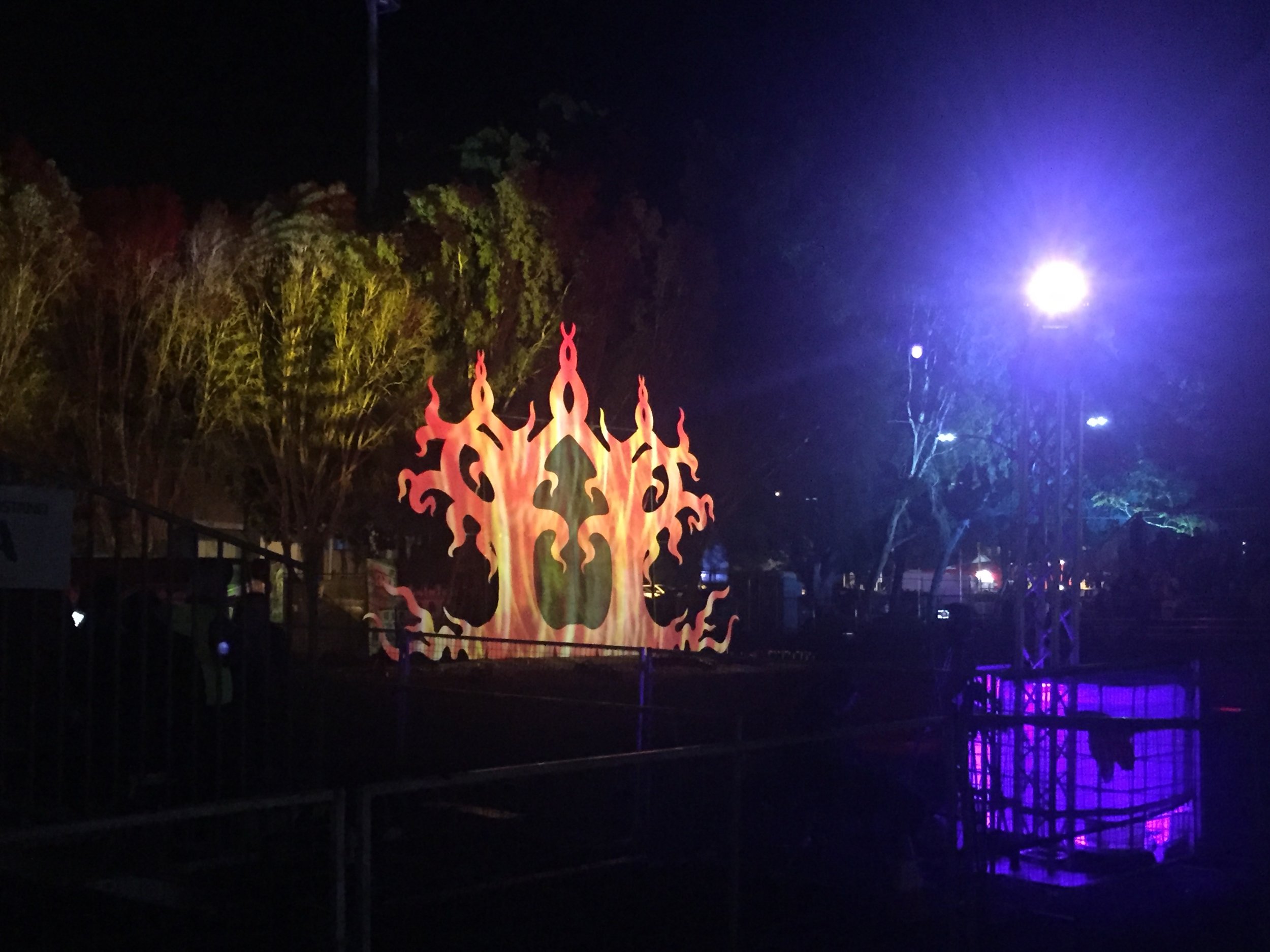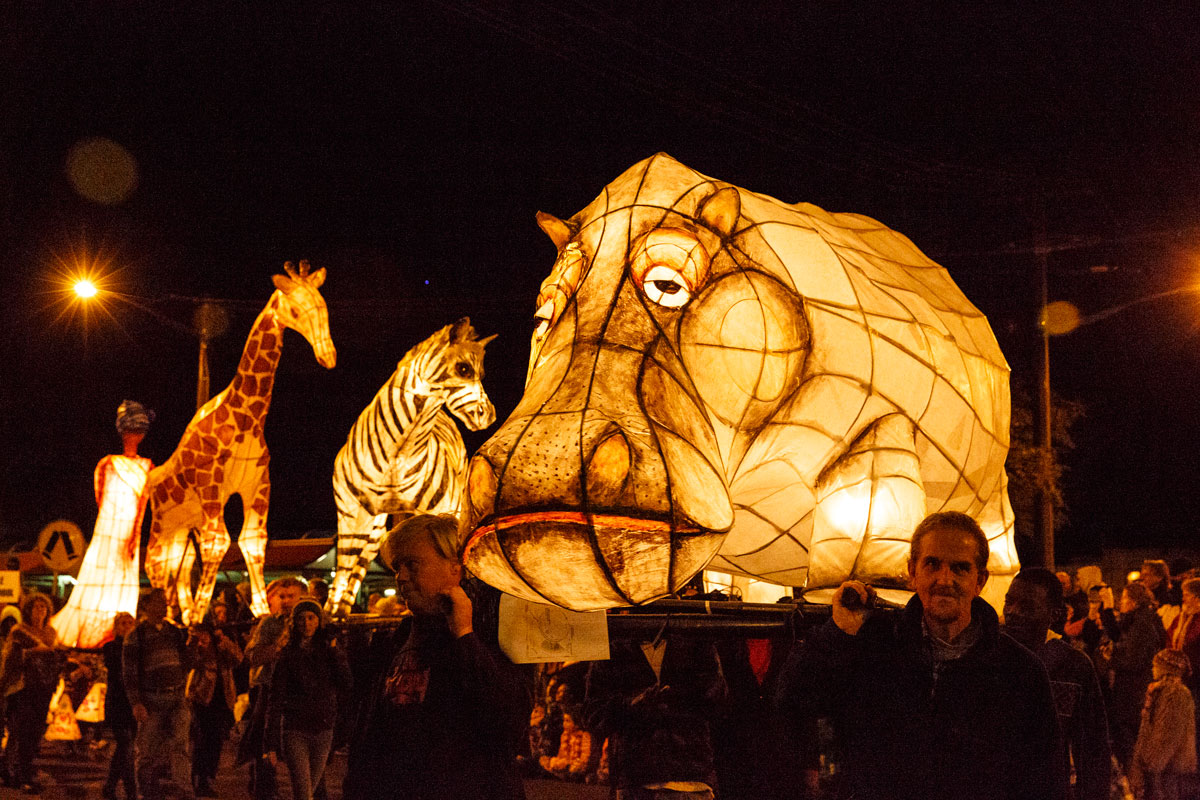I recently visited the town of Lismore in northern New South Wales, to participate in the annual Lantern Parade which takes place there around the winter solstice.
https://www.youtube.com/watch?time_continue=27&v=SXi-R1x1S34
The following is a belated account of the trip.
LISMORE
Lismore is one of the main urban centres in Northern Rivers, a coastal region stretching from Tweed Heads and the Border Ranges in the north, to the Clarence River in the south. With its fertile flood plains, lush subtropical rainforest and abundant marine life, the economy of Northern Rivers is founded on agriculture, forestry, fishing, and tourism.
Since the early 1970s the region has also been known as a hub of Australia’s counter-cultural movements, an equivalent perhaps to the hippie movements of the United States. The Aquarius Festival, which took place in 1973 near the small farming community of Nimbin, is often regarded as ‘Australia’s Woodstock’, and is credited with having galvanised the many alternative communities that still characterise the area.
In this regard, Northern Rivers is a kind of mirror image of northern California, with its particular confluence of social, political, and economic factors: resource-based wealth and niche high-quality agricultural produce, self-protective farming communities and strong narratives of pioneering settlement, back-to-the-land social and environmental movements, green and anarchist politics, a strong dose of surf culture and a scepticism of government. Lismore encapsulates this blend - a dairy farming town with a radical environmentalist Deputy Mayor; an electorate spilt between the conservative Liberal National Party and the progressive Green Party; the seat of a Catholic Bishop, with a solstice ritual at the heart of its contemporary identity…
The new Lismore Regional Gallery, part of the town’s civic centre Quadrangle alongside the Town Hall and Library.
LANTERN PARADE
The Lantern Parade is an annual community event held around the winter solstice. For one night, Lismore is transformed into a wonderland, as hundreds of LED paper & bamboo lanterns of all shapes and sizes are paraded through the streets. As a ritual, the event reconstitutes and reconfigures the economy of the town - the quintessential fête. Everyone is involved in some aspect: emergency services dedicate their resources to escorting the parade and safely burning large structures in the civic quadrangle, local suppliers and service-providers are engaged to provide infrastructure and labour, vendors set up along the streets and local businesses place lanterns in their windows, schools and youth groups from across the region make lanterns, masks and costumes to represent their communities, the local Council provides administrative support, work-for-the-dole and TAFE students undertake work experience placements.
There is no part of the local community untouched by the event. Community workshops start at Easter each year with many other volunteers travelling from across the Northern Rivers region, South East Queensland, around NSW, South Australia and Victoria to participate. The event attracts approximately 25,000 people each year and is estimated to contribute $3.4 million to the local economy. With this social, economic and cultural contribution to the City, the event has been formally recognised by Lismore City Council as its signature event. In 2019 the event celebrated its 25th anniversary to the theme ‘Rivers of Light’, representing all the community events that the Lantern Parade has travelled to over the years.
INFRASTRUCTURE: THE LANTERN SHED
Amy and I drove to Lismore on Friday 21st June, a two-hour drive south of Brisbane across the Qld-NSW border in a borrowed Subaru Forester. After dropping our bags at a friend’s house on Wotherspoon St (in which, we would soon discover, virtually everyone we spoke with seems to have lived at some point), we headed straight over to the ‘Lantern Shed’ on Keen Street, headquarters of Light’n’Up, the company responsible for instigating the Lismore Lantern Parade. An independent community arts organisation, Light’n’Up is perennially under-funded and under-resourced. They rely entirely on the energy and goodwill of volunteers to produce an event of incredible scope and quality.
It wasn’t long before we were put to work. After a few quick introductions we found ourselves packing a truck full of large paper and bamboo lanterns, ready to be sent across to the Town Hall. This is a typical experience of the Lantern Parade - people travel from all over the region and indeed the country, by whatever means they can muster, to give their time to the lantern parade. They are generously hosted by the community in Lismore, who in turn dedicate their own resources to transforming the town into a light-filled wonderland for one night.

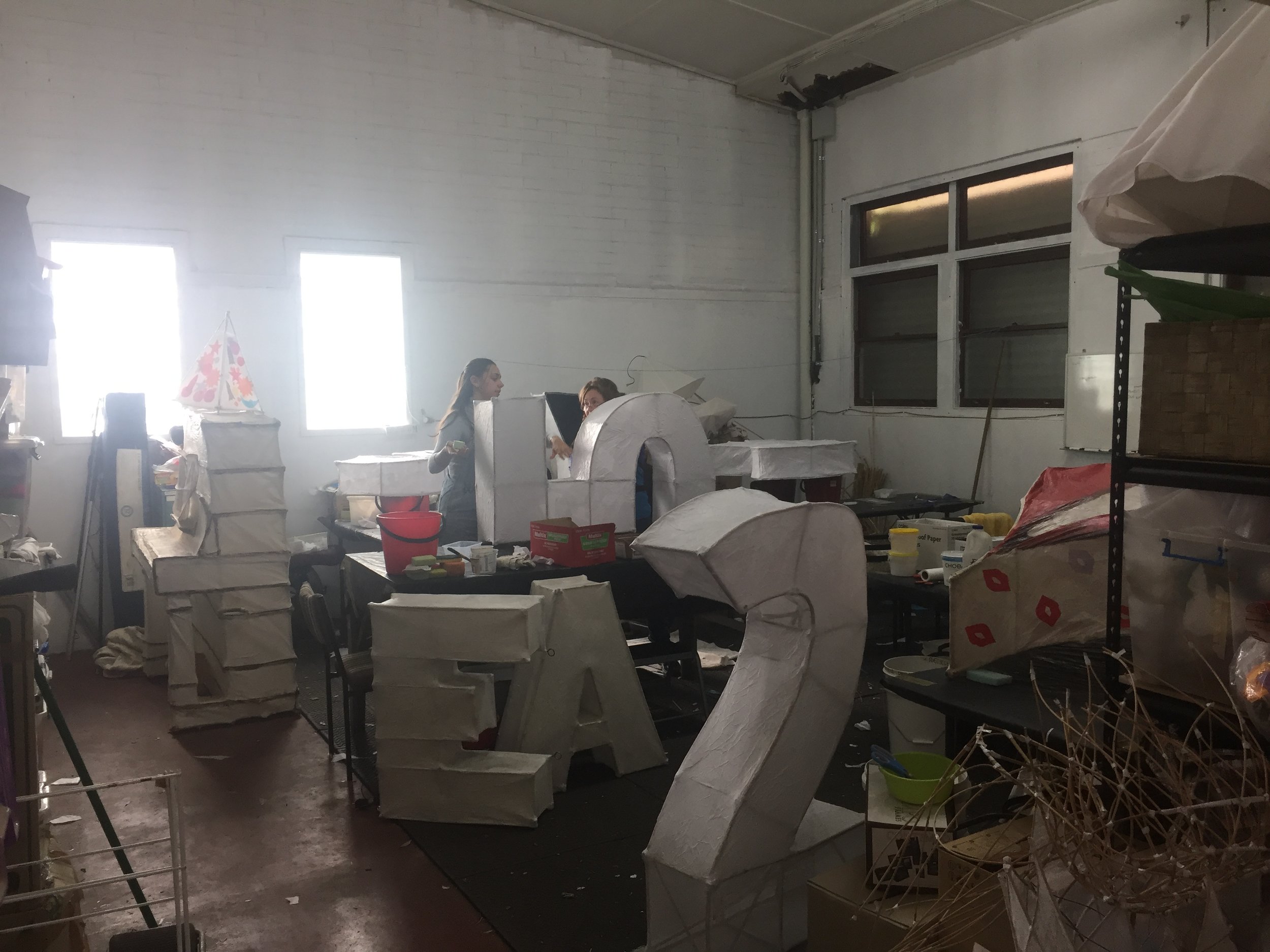




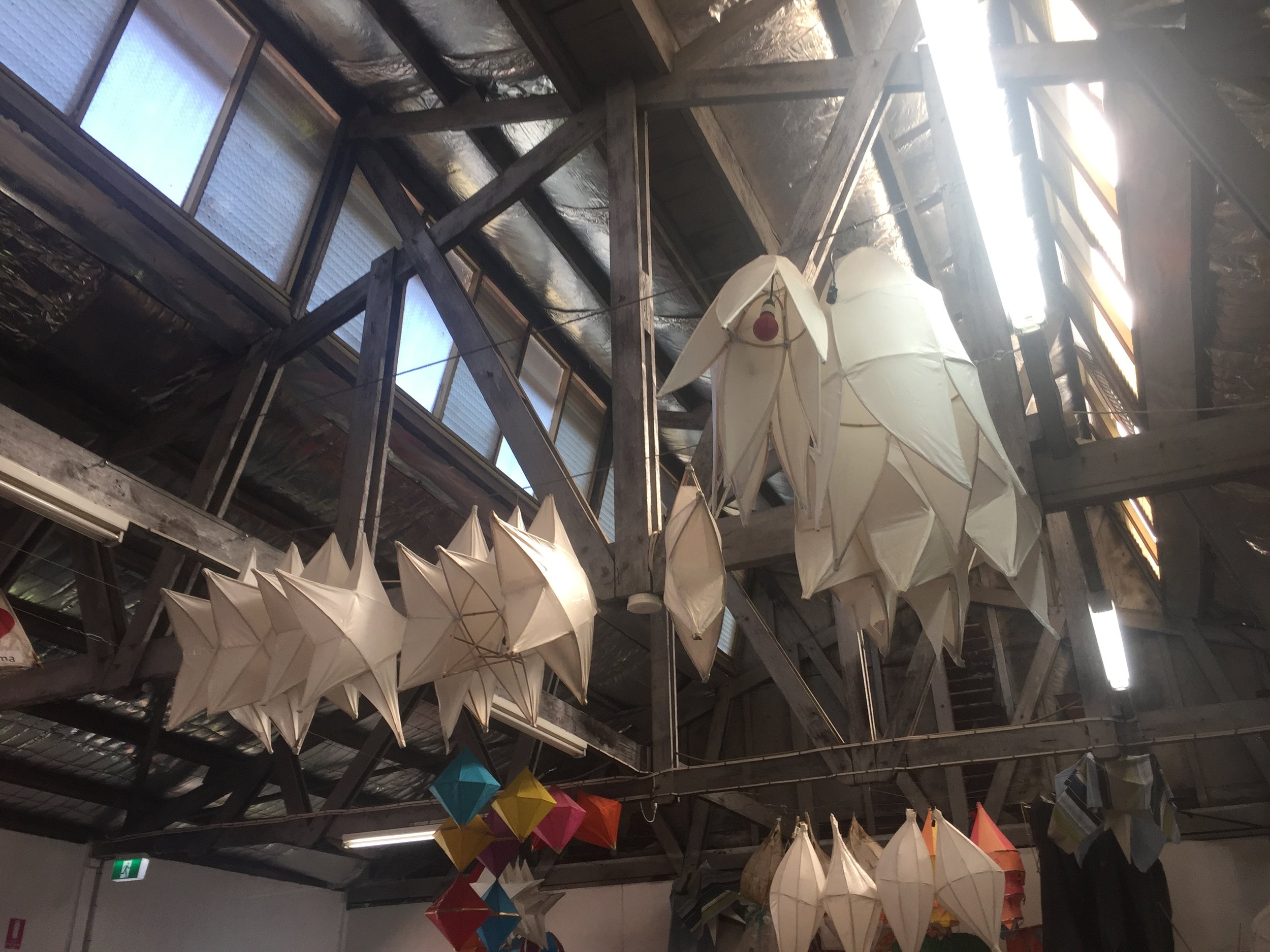


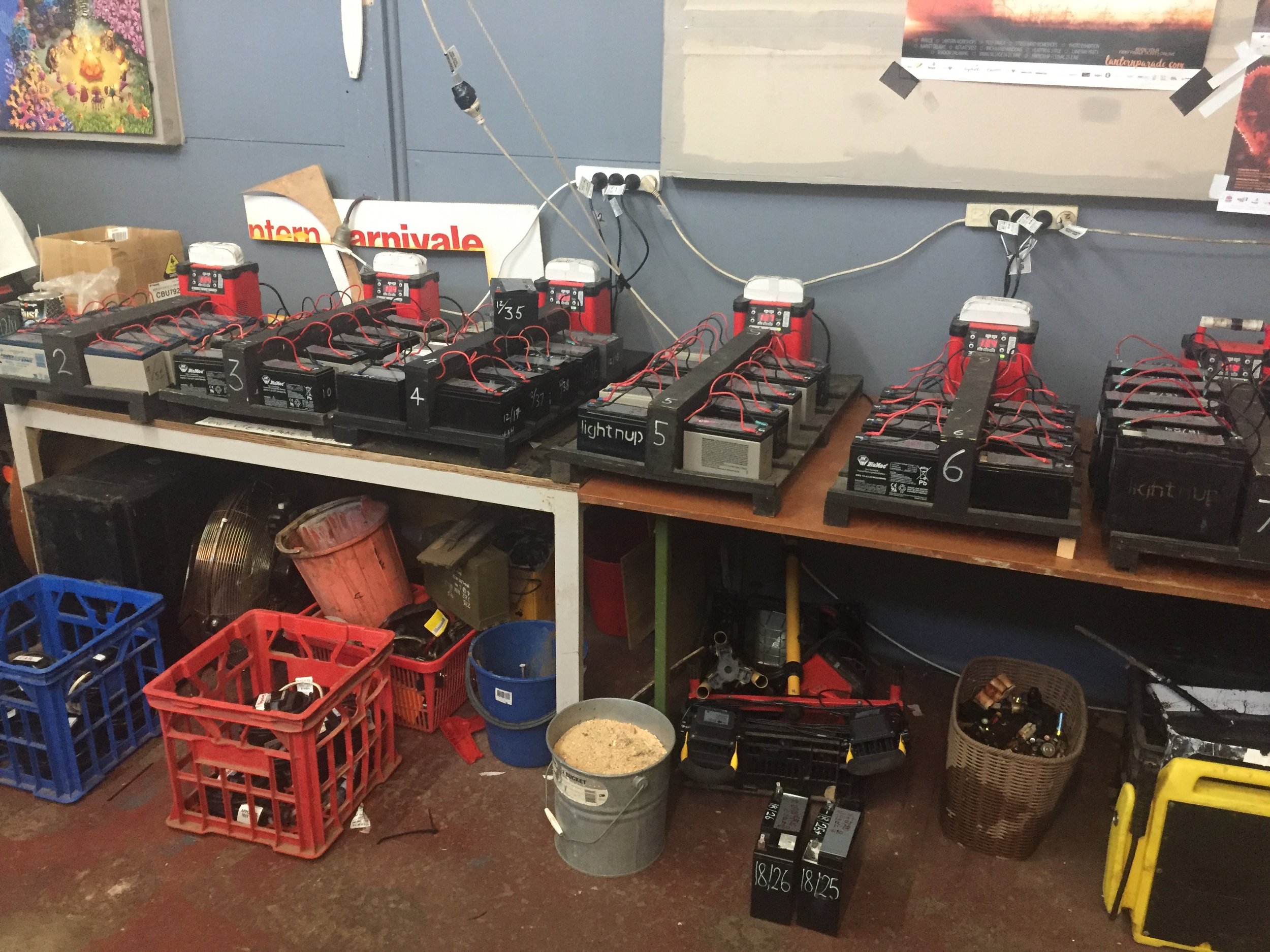
We managed to squeeze in a hello with Jyllie Jackson, the legendary founder of Light’n’Up, in between phone calls and relentless questions from her army of volunteers. Jyllie’s determined vision has driven the Lantern Parade project for over 25 years and been the inspiration for many imitators. She showed us photographs of some of her crew parading lanterns through the wards of the local hospital on the previous evening. Her favourite quote from a patient and long-term Lismore resident: “it’s the best medicine”.
I mentioned the idea of trying to describe the ‘infrastructure’ of a ritual like the Lantern Parade to Jyllie - her response: “Our infrastructure is Madness.”
Jyllie busy at her desk - fielding phone calls, filling out insurance forms, answering questions, and putting the finishing touches on her cat lantern!
RITUAL: FIREY FINALE
After doing a few truck loads between the Lantern Shed and the Town Hall / civic centre, where much of the weekend activity is concentrated, we were sent off to help out with the fire crew. These folks put together the finale, which takes place once the Lantern Parade has arrived at the end of its route at the civic centre. It involves an elaborate sequence of performances involving various kinds of fire props, flares, etc, and culminates with the burning of a ‘main image’ and fireworks display.
The tools and materials required to pull off this spectacle are fairly simple, but impressive nonetheless - lots of hessian, chicken wire, bamboo & hardwood stakes, black gaffer, plastic sheeting, and of course lots of firelight fuel.







